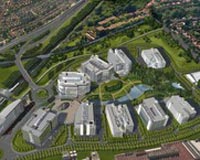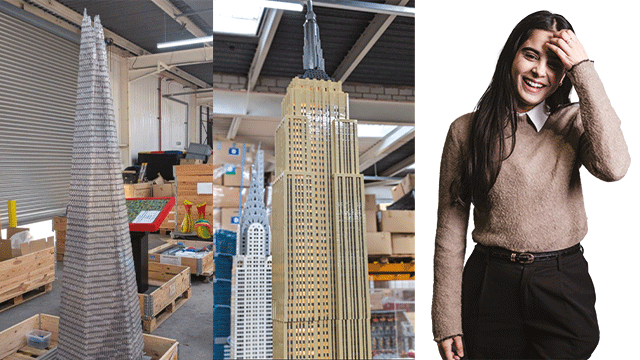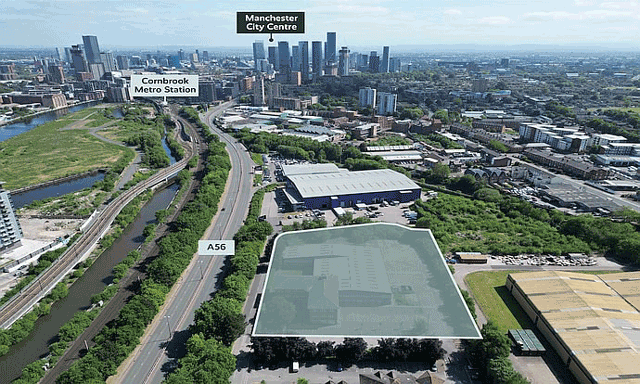Communities secretary Eric Pickles made the announcement in the closing days of January. On 1 April a new development corporation will be born, handing control over the regeneration of a vast slab of West London to Boris Johnson, mayor of London.
In theory parliament still has to give its blessing, but it is expected the new mayoral development corporation will have powers over infrastructure, regeneration, land acquisitions and planning approvals and the power to charge a community infrastructure levy.
The new corporation is seen as vital for the redevelopment of Old Oak Common, a 155ha (383 acre) chunk of semi-industrial land sandwiched between Willesden Junction and Wormwood Scrubs. The ambition is nothing short of monumental. A “Canary Wharf-type development” will arise, according to deputy mayor Sir Edward Lister, with shimmering residential towers, prime offices and the very best social amenities, including, perhaps, a football stadium. And underpinning it all is the promise of some slick transport infrastructure. By 2026 it will be the main interchange between Crossrail and HS2.
There is only one other MDC in existence – the London Legacy Development Corporation, which was established in 2012 and covers the 267ha London Olympic site.
But the MDC in the west will not be charged solely with transforming Old Oak Common. Its writ will hold sway over the entire 900ha of Park Royal.
For those in the game the prospect of the MDC for Park Royal is nothing new. “We have been in discussions with the mayor and his people about this for some time,” says Alan Holland, London business unit director for SEGRO. “The MDC is not just for the island, for Old Oak Common, but for the hinterland – Park Royal.”
And on 1 April it goes live. “That is quite something,” he says.
While all the media attention and debate has been focused on what is planned for Old Oak, what will the MDC mean for Park Royal, London’s largest industrial area? And, with the pressure greater than ever to build more housing in the capital, can it really hope to stay industrial much longer?
In principal, Holland says, the MDC is a blessing. “It is being tackled in a way to remove the constraints that have stopped Park Royal from achieving its potential,” he says.
Just by simplifying the chain of command the MDC hopes to achieve some of that. Park Royal straddles the border of three London boroughs, Hammersmith & Fulham, Brent and Ealing. This means a co-ordinated vision for the area has always been difficult to attain, let alone maintain.
Previously there was the Park Royal Partnership, which comprised the boroughs and major landholders and helped co-ordinate plans and funding for the area, but that was dissolved in July.
“Dealing with one strategic authority, with less pressure on local political fluctuations, is no bad thing for opportunity sites of this scale,” says Kieron Hodgson, director at London planning niche Iceni Projects.
“However, the corporation’s success hinges on it having consistent political support,” he adds. “That includes the backing of the current and successive mayors over the cycle of these projects.”
Without this backing the corporation’s political autonomy, boundaries and, most importantly, financial and staff resources could be thrown into regular turmoil, rendering it ineffective.
Assuming it is functional, what will its impact be?
The various incarnations of the London Plan – the grand, strategic planning framework for the capital – have recognised that Park Royal is a strategic industrial location. The local authorities, too, in their plans, have also enshrined Park Royal’s industrial identity in law. Mayor Johnson has also reiterated his personal commitment to the industrial nature of the area. Last year his office published the Park Royal Atlas, which both documented and celebrated the myriad industrial uses in the area and made a tacit promise to preserve them.
While the watchword for Old Oak Common appears to be “transformation” – taking a semi-industrial hinterland and recreating it as a second Canary Wharf – the stated ambition for the rest of Park Royal appears to be “intensification”.
A spokesman for the mayor of London told EG: “The proposed Old Oak and Park Royal Development Corporation would safeguard and develop Park Royal as a strategic industrial location and attract long-term investment to ensure it continues to remain one of London’s most important industrial bases.”
In order to achieve this, Johnson has commissioned an employment land review to investigate, in detail, employment supply and demand in the area. “This review will recommend exactly what is needed to ensure new employment best suits the differing needs of Park Royal and Old Oak Common.”
Added to this, consultation will soon begin on an opportunity area planning framework for Park Royal, which will include planning guidance that safeguards the area’s employment uses. It will also include measures to support Park Royal’s expansion and provide an additional 10,000 jobs.
So far, so industrial. But the London Plan also makes it clear that Park Royal is a development opportunity area. At a minimum it must supply 1,500 homes, in addition to the 24,000 at Old Oak.
But is there a danger that the need for residential could start to muscle in on the industrial elements?
Holland says not, but he concedes: “That might be a possibility at some point, in abstract terms.”
When the consultation period on the proposed MDC was launched last year, Johnson said: “The arrival of Crossrail and HS2 provides a once-in-a-lifetime chance to transform Old Oak Common and Park Royal into a brand new neighbourhood for west London.”
His use of the term “neighbourhood” was taken by many, including some of the smaller industries operating in Park Royal, to mean an increase in housing and a spot of “cleansing”.
In all of the planning documents, the need to retain and intensify the business use goes hand in hand with the other agenda – housing. Plans drawn up by Sir Terry Farrell for Hammersmith & Fulham state that Park Royal could provide 12,500 homes.
Holland argues that any attempt to prioritise homes over business in Park Royal would be idiotic. After all, while there is a need to house the extra 2m people expected to move to London by the time HS2 arrives at Old Oak in 2026, they also need somewhere to work. “London needs Park Royal to keep running,” says Holland. “It is essential. It operates for food and beverage in the same way that the City does for financial services.”
Indeed, while Park Royal ceased to be a major producer of food and drink in the last century, it is still the gateway – the mouth, if you like – for much of what London eats and drinks. “Approximately one-third of London’s F&B comes through, if not from, Park Royal,” Holland states.
In this sense, the creation of the MDC is actually intended to preserve that. One of its core objectives is to protect and enhance the “bread-basket of London”. “The corporation is intended to protect that as the ‘Canary Wharf of the west’ pops up next door,” says Holland. “But we need to ensure the Old Oak vision fits in with Park Royal’s needs.”
Combining those competing needs, housing and employment, is the challenge for the Old Oak and Park Royal Development Corporation. Another fear, expressed by some of the industries located in the railway lands, is that, even if business use is protected, they will be forced out by a “gentrification” of the business space. But Holland, whose estate accounts for some of the shinier premises in Park Royal, argues that it is in no one’s interest to sweep the site clean.
“You couldn’t just rub it all out and stick a load of houses on it,” he says. “Equally, you can’t turn all Park Royal into office blocks and corporate headquarters.”
And not just because of the vested interests. “Park Royal contains a rich heritage and cultural diversity, a variety of businesses,” he says. “That rich diversity is needed in London. If it became monochrome, that would be a shame. A disaster.”
What Boris and his team appear to want is to find a way of blending it all together – the industrial uses, the femidom factory, the housing, the juice bars and the new office blocks. And the MDC is, in theory, the best way to achieve that.
“It should, and must, have a positive impact,” says Holland. “Everyone involved wants Park Royal and its businesses to thrive, not to suck the life out of it because of the Old Oak skyscrapers.”
But, as Holland acknowledges, a development corporation is a powerful tool. It is possibly the most powerful piece of kit in the urban regeneration toolbox.
In Johnson’s hands it may be used wisely, but who knows how it may be wielded by a successive mayor and their team.
After all, there is no proposed end-date for the lifespan of the corporation. Those powers could potentially be retained and wielded indefinitely. Even the mayor’s office acknowledges this. “Given the scale of the regeneration opportunity it is clear that this is very much a long-term project,” his spokesman says. “The proposed OPDC would be expected to operate for as
long as is necessary to achieve its objectives.”
And therein lies the potential problem.
“While the in-situ mayor gives clear guidance and direction, it remains to be seen what will happen after the next mayoral election,” Hodgson points out. “Whoever wins, it won’t be Boris at the helm.”
Park Royal
Park Royal is an anomaly in West London. At nearly 900ha it is the capital’s largest industrial estate, and one of the largest in Europe.
It is home to a broad range of doers and makers ranging from sound studios to juice producers to femidom factories. Its origins lie in the mid 1800s when the arrival of the canals and then the railways made the area a prime site for manufacturing, and it took its name from the Royal Agricultural Society, which owned the land and held shows there from 1903 to 1905.
Since then it has become “London’s kitchen” with McVities, Heinz and Guinness all calling Park Royal home at one time or other. And, as it largely escaped bombing during the second world war, it has been allowed to retain its industrial identity, through boom and bust, into the 21st century.











